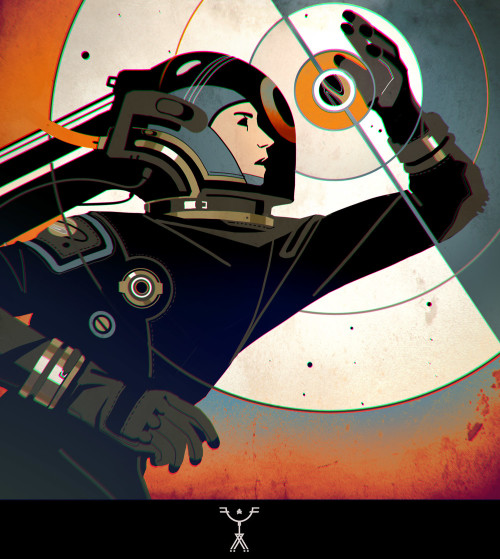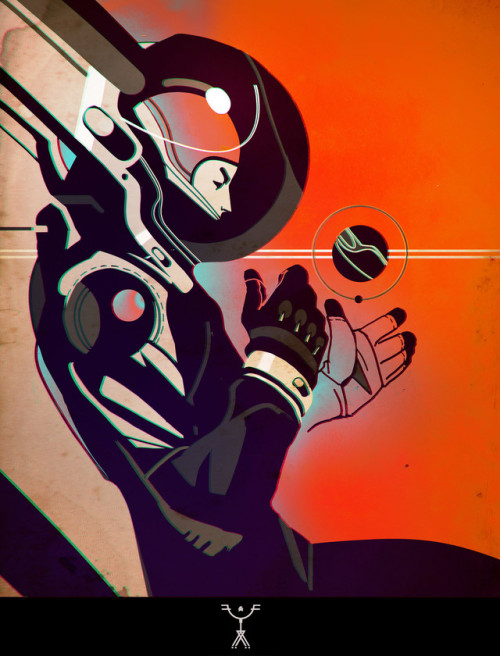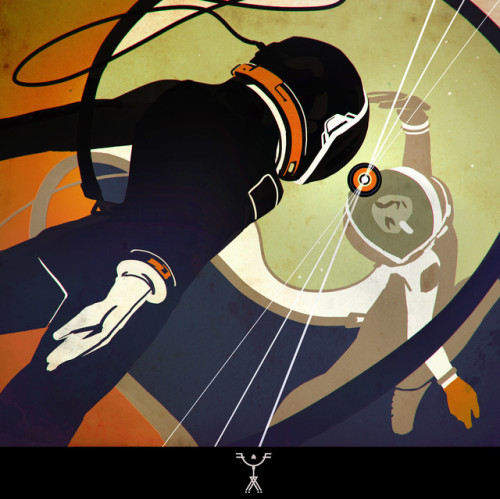11. Gemini 7 And Gemini 6A










11. Gemini 7 and Gemini 6A
(Combining these two, or else I wouldn’t be able to fit every manned flight into a 20 day countdown!)
Date: December 4-18, 1965 (Gemini 7: 13 days, 18 hours, 35 minutes, 1 second) and December 15-16, 1965 (Gemini 6A: 1 day, 1 hour, 51 minutes, 24 seconds)
Crew: Frank F. Borman II and James A. “Jim” Lovell, Jr. (Gemini 7) and Walter M. “Wally” Schirra, Jr. and Thomas P. Stafford
Mission Highlights: The original Gemini 6 flight was set to take place in October 1965, to rendezvous and dock with the unmanned Agena Target Vehicle (ATV). However, the ATV exploded shortly after launch on Oct. 25, leading to the cancellation of Gemini 6. The mission was altered to work with another Gemini flight flying later that year, and renamed Gemini 6A.
6A’s sister flight, Gemini 7, launched on December 4th, piloted by spaceflight rookies Frank Borman and Jim Lovell. The main objective of Gemini 7 was to complete a long-duration spaceflight, testing the effects of the longest spaceflight to date (two weeks) on the human body. Testing food rations, undergoing medical experiments, collecting bodily waste samples, and trying to get comfortable in the extremely tight quarters proved to be challenging at times.
Meanwhile on the ground, Gemini 6A suffered significant delays that pushed launch from December 12 to the 15th. Once reaching orbit, Gemini 6A and Gemini 7 commenced rendezvous. Over the next four hours, the two spacecraft came within a foot of each other. An earlier proposal had included a double-EVA in which Jim and Tom would switch spacecraft, but that plan was eventually rejected on several grounds. However, both crews were impressed with the navigational abilities of the Gemini spacecraft and precision of rendezvous.
The next morning, shortly before Gemini 6A’s reentry, Wally spotted an unidentified (and particularly festive) flying object “in a polar orbit” around the Earth… (which also led to the first musical performance broadcast from space)!
After Gemini 6A descended to Earth, recovered by the USS Wasp in the Atlantic, Jim and Frank were left with three days in space and quite a bit of boredom. Malfunctions frustrated the tired and cramped (and smelly) crew. At some point, one of the astronauts (Jimbo) lost his toothbrush, forcing them to share just one. The crew was very eager for reentry by December 18. When the crew was recovered by the USS Wasp nearly 14 days after launch, Jim and Frank announced their engagement to the frogmen!
Significance: Both the successful rendezvous and long-duration flight were significant accomplishments for the American space program, as both objectives were essential to a lunar mission. The stellar rendezvous allowed NASA to move forward with an attempted docking (we’ll see how that goes tomorrow…). Several lessons were learned by forcing two astronauts into a tin can together for two weeks, many of which helped to improve the experiences of future Gemini and Apollo crew members. And, of course, the lifelong friendship between two American heroes became even closer (er, maybe a little too close?)

More Posts from Cozy-airlessness and Others

Space shuttle concept art from Rockwell International, late 1970s.

ariane yeong
Tiny Shuttle inspects the engines of a huge Soyuz





Pathfinder (OV-201) launching from its Lockheed C-5 carrier and accelerating to the moon during her maiden voyage, September 1983.
Clips from Episode 9, Season 2 Triage "For all Mankind"


Halloween costume is just about done 👩🚀🚀
biggest betrayal is when it’s supposed to thunderstorm and it doesn’t



Space Travellers by Fred Augis
An Astronaut’s Tips For Living in Confined Spaces
One thing astronauts have to be good at: living in confined spaces for long periods of time.

Nearly 20 years successfully living on the International Space Station and more than 50 flying in space did not happen by accident. Our astronauts and psychologists have examined what human behaviors create a healthy culture for living and working remotely in small groups. They narrowed it to five general skills and defined the associated behaviors for each skill.
For many of us in a similar scenario, here are the skills as shared by astronaut Anne McClain:
Skill 1, Communication

Share information and feelings freely.
Talk about your intentions before taking action.
Discuss when your or others’ actions were not as expected.
Take time to debrief after success or conflict.
Admit when you are wrong.
Skill 2, Self-Care

Balance work, rest, and personal time. Be organized.
Realistically assess your own strengths and weaknesses, and their influence on the group.
Identify personal tendencies and their influence on your success or failure. Learn from mistakes.
Be open about your weaknesses and feelings.
Take action to mitigate your own stress or negativity (don’t pass it on to the group).
Skill 3, Team Care

Demonstrate patience and respect. Encourage others.
Monitor your team (or friends and family) for signs of stress or fatigue.
Encourage participation in team (or virtual) activities.
Volunteer for the unpleasant tasks. Offer and accept help.
Share credit; take the blame.
Skill 4, Group Living

Cooperate rather than compete.
Actively cultivate group culture (use each individual’s culture to build the whole).
Respect roles, responsibilities and workload.
Take accountability; give praise freely. Then work to ensure a positive team attitude.
Keep calm in conflict.
Skill 5, Leadership/Followership

Accept responsibility.
Adjust your style to your environment.
Assign tasks and set goals.
Lead by example. Give direction, information, feedback, coaching and encouragement.
Talk when something isn’t right. Ask questions.
We are all in this together on this spaceship we call Earth! These five skills are just reminders to help cultivate good mental and physical health while we all adjust to being indoors. Take care of yourself and dive deeper into these skills HERE.
Make sure to follow us on Tumblr for your regular dose of space: http://nasa.tumblr.com.


The crescent Moon grows as Apollo 12 approaches, 17 November 1969.

The spacecraft Rosetta made this incredible picture during a Mars flyby!
-
 gladiolusrex liked this · 2 months ago
gladiolusrex liked this · 2 months ago -
 beyondafinecupofcoffee liked this · 7 months ago
beyondafinecupofcoffee liked this · 7 months ago -
 vintagenasaa liked this · 8 months ago
vintagenasaa liked this · 8 months ago -
 justatheatrekidwholovesspace liked this · 4 years ago
justatheatrekidwholovesspace liked this · 4 years ago -
 somewhereacrosstheuniverse liked this · 4 years ago
somewhereacrosstheuniverse liked this · 4 years ago -
 kawaiipiratetaco liked this · 5 years ago
kawaiipiratetaco liked this · 5 years ago -
 call-me-schmidt reblogged this · 5 years ago
call-me-schmidt reblogged this · 5 years ago -
 oopsabird liked this · 5 years ago
oopsabird liked this · 5 years ago -
 idreamilyatomiccollector liked this · 5 years ago
idreamilyatomiccollector liked this · 5 years ago -
 ridethecyanide liked this · 5 years ago
ridethecyanide liked this · 5 years ago -
 beages liked this · 5 years ago
beages liked this · 5 years ago -
 cozy-airlessness reblogged this · 5 years ago
cozy-airlessness reblogged this · 5 years ago -
 charlie-duke reblogged this · 5 years ago
charlie-duke reblogged this · 5 years ago -
 iambasilgnome liked this · 5 years ago
iambasilgnome liked this · 5 years ago -
 worldinmywindow reblogged this · 5 years ago
worldinmywindow reblogged this · 5 years ago -
 kewpiedoll liked this · 5 years ago
kewpiedoll liked this · 5 years ago -
 ya-oryol liked this · 5 years ago
ya-oryol liked this · 5 years ago -
 jackswigert liked this · 5 years ago
jackswigert liked this · 5 years ago -
 bewareofdragon liked this · 5 years ago
bewareofdragon liked this · 5 years ago -
 genna-ivanovich liked this · 5 years ago
genna-ivanovich liked this · 5 years ago -
 worldinmywindow2 liked this · 5 years ago
worldinmywindow2 liked this · 5 years ago -
 parkerruss liked this · 5 years ago
parkerruss liked this · 5 years ago -
 victorthornton56 liked this · 5 years ago
victorthornton56 liked this · 5 years ago -
 webertie liked this · 5 years ago
webertie liked this · 5 years ago -
 rolmega liked this · 5 years ago
rolmega liked this · 5 years ago -
 skidrow-seymour liked this · 5 years ago
skidrow-seymour liked this · 5 years ago -
 vintage-wallyschirra liked this · 5 years ago
vintage-wallyschirra liked this · 5 years ago -
 egglybagelface96 liked this · 5 years ago
egglybagelface96 liked this · 5 years ago -
 missionspecialist liked this · 5 years ago
missionspecialist liked this · 5 years ago -
 kuiperkat reblogged this · 5 years ago
kuiperkat reblogged this · 5 years ago -
 saltythexfilesindianjonescop liked this · 5 years ago
saltythexfilesindianjonescop liked this · 5 years ago -
 our42gpwblr liked this · 5 years ago
our42gpwblr liked this · 5 years ago -
 no-mans-ocean liked this · 5 years ago
no-mans-ocean liked this · 5 years ago -
 svenskadata liked this · 5 years ago
svenskadata liked this · 5 years ago -
 woodyredwoody liked this · 5 years ago
woodyredwoody liked this · 5 years ago -
 jimstares liked this · 5 years ago
jimstares liked this · 5 years ago -
 sdp1991 liked this · 5 years ago
sdp1991 liked this · 5 years ago -
 sonicthecheese liked this · 5 years ago
sonicthecheese liked this · 5 years ago -
 good-and-colorful reblogged this · 5 years ago
good-and-colorful reblogged this · 5 years ago -
 confused--robot liked this · 5 years ago
confused--robot liked this · 5 years ago -
 flowershopp liked this · 5 years ago
flowershopp liked this · 5 years ago

21 · female · diagnosed asperger'sThe vacuum of outer space feels so comfy :)
233 posts